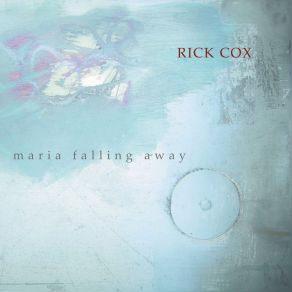Jon Hassell
Wikimp3 information about the music of Jon Hassell. On our website we have 28 albums and 11 collections of artist Jon Hassell. You can find useful information and download songs of this artist. We also know that Jon Hassell represents Jazz genres.
Biography
[Edit]Trumpeter Jon Hassell was the originator and unrivaled master of the musical aesthetic he dubbed Fourth World — in his own words, "a unified primitive/futuristic sound combining features of world ethnic styles with advanced electronic techniques." Born March 22, 1937, in Memphis, TN, he attended Rochester, NY's Eastman School of Music and Washington, D.C.'s Catholic University before studying in Europe under the legendary Karlheinz Stockhausen. After subsequent collaborations with minimalist pioneers La Monte Young and Terry Riley, Hassell mounted a number of solo pieces known collectively as the Landmusic Series; the most famous of these so-called "sound monuments" was 1969's Solid State, an electronic project that evoked the gradual erosion of sand dune formations via a tuned mass of vibrations.
Beginning in 1972, Hassell studied classical Indian music under the tutelage of Pandit Pran Nath, modifying Nath's vocal techniques to the trumpet to develop the Fourth World concept, which he introduced with 1978's Vernal Equinox. The jazz-inspired Earthquake Island appeared a year later, and in 1980 Hassell issued Possible Musics/Fourth World Vol. 1, a collaboration with Brian Eno. (A sequel, Dream Theory in Malaya/Fourth World Vol. 2, was quick in forthcoming.) Through Eno, he also began working with a series of experimental pop acts, appearing on records by Talking Heads, David Sylvian, and Peter Gabriel; in 1982, Hassell additionally scored Magazzini Criminali's Venice production of Sulla Strada, earning an Ubu Award for Best Music for a Theatrical Work.
Following 1983's Aka-Dabari-Java/Magic Realism (co-produced by Daniel Lanois), Hassell did not resurface on record until 1986's Power Spot; in the interim, he composed "Pano de Costa," a string quartet piece recorded by the Kronos Quartet for their White Man Sleeps LP. The Surgeon of the Nightsky Restores Dead Things by the Power of Sound followed in 1987, and that same year Hassell collaborated with the Burkina Faso percussion ensemble Farafina, a union that spawned 1989's Flash of the Spirit. The hip-hop-inspired City: Works of Fiction appeared in 1990, and four years later he launched Dressing for Pleasure; subsequent projects have included Lurch, an experimental dance piece choreographed by Gideon Obarzanek, and 1999's Fascinoma, on which Hassell collaborated with Ry Cooder and Jacky Terrasson. Hollow Bamboo was issued a year later. Hassell returned in 2005 with the release of Maarifa Street: Magic Realism, Vol. 2, which featured live recordings reworked and mixed with studio sessions. In 2009, Hassell released the much lauded ECM effort Last Night the Moon Came Dropping Its Clothes in the Street, which once again featured material woven together from a variety of studio sessions.
Title: City - Works Of Fiction (Expanded & Remastered) (CD2)
Artist: Jon Hassell
Genre: Electronica, Jazz, Dub
Title: Original Fictions City: Works Of Fiction (CD1)
Artist: Jon Hassell
Genre: Electronica, Jazz, Dub
Title: Sketches Of The Mediterranean
Artist: Jon Hassell
Genre: Ambient, Avant Garde Jazz, Experimental
Title: Sulla Strada
Artist: Jon Hassell
Genre: Ambient, New Age, Electronica, Alternative, Experimental, Classical
Title: Earthquake Island
Artist: Jon Hassell
Genre: New Age, Electronica, Techno, Blues, Jazz, Dancefloor, World Music, Alternative, Classical
Title: Psychogeography (Zones Of Feeling)
Artist: Jon Hassell
Genre: Ambient, Electronica, Experimental, Classical
Title: Listening To Pictures (Pentimento Volume One)
Artist: Jon Hassell
Genre: Ambient, Electronica
Title: The Surgeon of the Nightsky Restores Dead Things by the Power of Sound
Artist: Jon Hassell
Genre: New Age, Electronica, Jazz, Rock
Title: Seeing Through Sound (Pentimento Volume Two)
Artist: Jon Hassell
Genre: Ambient, Electronica, Jazz
Title: Last Night the Moon Came Dropping Its Clothes In the Street
Artist: Jon Hassell
Genre: Ambient, New Age, Electronica, Jazz, Avant Garde Jazz, Rock, Avant Garde Metal
Title: Flash of the Spirit
Artist: Jon Hassell, Farafina
Genre: New Age, Electronica, Jazz, World Music
Title: City - Works Of Fiction (Expanded & Remastered) (CD1)
Artist: Jon Hassell
Genre: Electronica, Jazz, Dub
Title: Siwan
Artist: Amina Alaoui, Jon Balke, Jon Hassell
Genre: Jazz, Avant Garde Jazz, World Music
Title: Maarifa Street
Artist: Jon Hassell
Genre: New Age, Electronica, Jazz, Rock, Punk Rock, World Music, Alternative, Classical
Title: Birdy
Artist: Peter Gabriel, Tony Levin, Larry Fast, David Rhodes, John Giblin, Manny Elias, Jon Hassell, Morris Pert, Jerry Marotta, Drummers Of Ekome, The
Genre: Electronica, Theatre/Soundtrack
Title: Fourth World 2-Dream Theory In Malaya (& Jon Hassell) Reissue 1991
Artist: Jon Hassell, Brian Eno
Genre: Ambient, Electronica, Experimental Rock, Pop
Collections
Title: Greater Lengths
Genre: Electronica, Alternative
Title: Utopia Americana Reload
Genre:
Title: Angel Eyes (Original Motion Picture Soundtrack)
Genre: Pop, Theatre/Soundtrack
Title: ECM Selected Signs III-VIII
Genre: Jazz
Title: A Brief History Of Ambient Vol. 1 (CD2)
Genre: Ambient
Title: Bleep - The Top 100 Tracks Of 2018 (CD1)
Genre: Ambient, Downtempo, Electronica, House, Techno, Hip Hop/R&B, Experimental
Title: Bleep Top 100 Tracks 2020 (CD1)
Genre: Electronica
Title: Bleep Top 100 Tracks 2020 (CD2)
Genre: Electronica
Title: Great American Songbook Essentials (CD2)
Genre: Jazz
Featuring albums
Title: Pink Noir
Artist: David Toop
Genre: Ambient, Electronica, Techno, Avant Garde Jazz, Avant Garde Metal, Dancefloor, Dance Pop, Alternative
Title: Dead Rising 4 (Original Soundtrack)
Artist: Various Artists
Genre: Theatre/Soundtrack, Instrumental, Instrumental
Title: Miracle Steps (Music from the Fourth World 1983-2017)
Artist: Various Artists
Genre: Electronica
Title: Sleeper Cell (Original Soundtrack)
Artist: Paul Haslinger
Genre: Ambient, Electronica, Theatre/Soundtrack















































